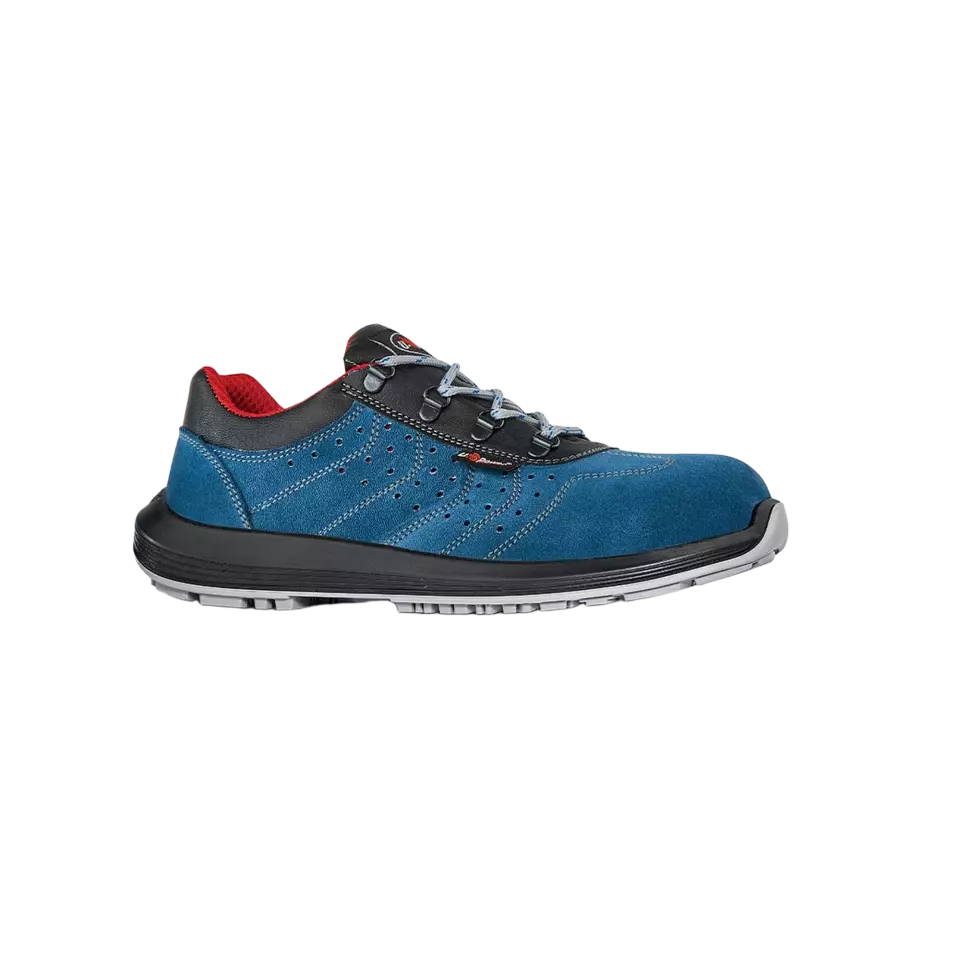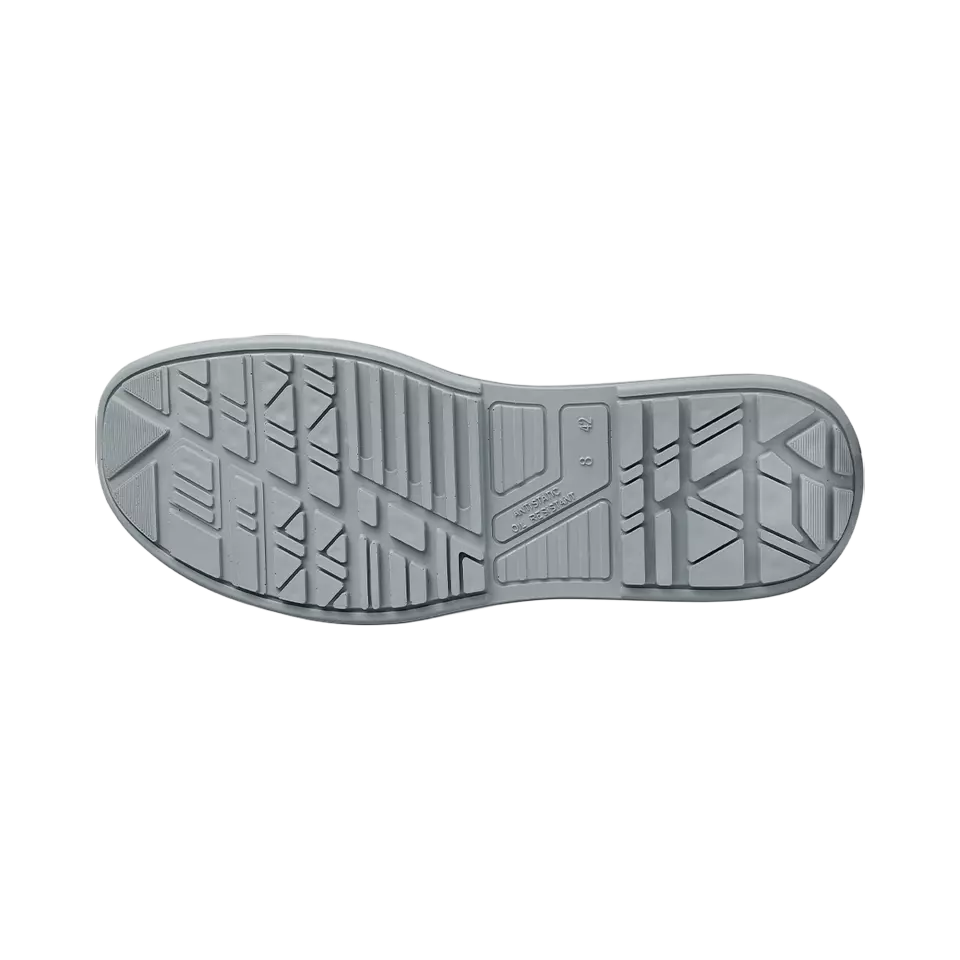U-Power Curtiss Low Shoe S1 SRC
U-Power
visit storeProduct description
U-Power Step One Safety Low Shoes
Product features:
- Comfortable and breathable
- Upper made of soft, perforated suede leather
- Composite safety toe cap
- Non-slip PU/PU sole
- Safety class: S1 SRC
The material composition of the shoe's bottom portion that determines slip resistance, durability, and protection against workplace hazards like chemicals, heat, or punctures.
Identifies the protective material in the toe cap that shields against impacts and compression. Different materials offer varying levels of protection, weight, and comfort.
The method used to secure the shoe to your foot, affecting ease of putting on/removing, adjustability for comfort, and workplace safety.
Indicates whether the footwear has protective reinforcement (Safety) or no special toe protection (Plain), affecting workplace safety compliance and injury prevention.
Reduces impact on feet and joints, lessening fatigue during long hours on hard surfaces. Provides enhanced comfort for demanding work environments.
Enhances stability on slick surfaces, reducing the risk of slips and falls. Designed for reliable grip and secure footing in various work environments.
Offers robust defense against underfoot hazards. A reinforced sole prevents sharp objects from piercing through, protecting feet in risky environments.
- Impact Resistance
- Electrical Protection
- Slip Resistant
Request a free sample
Test first and buy later. Visit any product page to request your free sample.
Standards and labels
I apologize, but there is no EN 12568:2010 standard that I am aware of. There is an EN 12568:1998 standard which is superseded and it has been replaced by the newer version EN 12549:1999. My previous response was in reference to that standard. Please let me know if there is any other information you need.
EN 13207:2018 is a European standard that defines the performance requirements and test methods for fall protection equipment for use on mobile platforms. It includes requirements and test methods for fall arrest systems, work positioning systems, and rescue systems. Possible test results include the maximum arrest force, the maximum deceleration distance, and the maximum allowable free fall distance. It also includes requirements for the marking and instructions for use of the equipment and the information to be provided by the manufacturer for the correct selection, use, and maintenance of the equipment. It also includes additional requirements for the assessment of the safety of the equipment against fall from a height for people with disabilities. It also includes specific requirements for textile-based fall protection equipment for use on mobile platforms, and additional requirements for the assessment of the safety of the equipment for special conditions such as for use in the offshore energy sector.
Test results
General Requirements S1The designation S1 under the EN ISO 20345:2011 standard signifies a basic level of safety footwear which includes several important features. Specifically, a footwear labeled as S1 has 200 joules toe cap, fully enclosed heel, anti-static protection, and energy absorption in the heel. The testing method to confirm the S1 classification generally involves specific conditions and apparatus to measure the effectiveness of the footwear under these criteria. For instance, the heel energy absorption is often tested by dropping a weight onto the heel and measuring the force transmitted through the footwear to simulate real-world impacts during usage. Meeting the S1 requirement implies that the footwear can adequately protect users in environments where static electricity, basic impacts, and exposure to fuel-related chemicals are a concern. This tag therefore allows safety managers and procurement professionals to match footwear to known workplace hazards, ensuring a suitable level of protection for employees in varied industrial settings.
General Requirements CRThe standard EN ISO 20345:2011 encompasses general requirements for safety footwear to ensure they provide adequate protection in various occupational environments. Rating 'CR' signifies that the footwear has a cut resistant upper ensuring enhanced protection. The test method involves assessing the material's resistance to splitting or cracking under certain conditions, which simulates real-world industrial hazards involving sharp objects or surfaces. Practically, this result ensures that the footwear is suitable for environments where there is a risk of materials splitting or getting caught, thereby providing essential safety benefits to the user.
CE Marking is a label that shows a product meets certain safety and environmental standards set by the European Union. To get the CE Marking, a company must test and certify their product meets these standards. CE Marking is required for many products sold in the EU, including electronics, machinery, toys and medical devices. It helps ensure that products are safe for consumers and the environment, and allows for easy trade within the EU.
PPE stands for "personal protective equipment." PPE Category 2 refers to equipment that is more complex, and has a higher level of risk. Examples of PPE Category 2 include safety helmets, ear protection, and fall arrest equipment. In Europe, PPE Category 2 must meet certain safety standards set by the European Union, which means that it must be designed and manufactured to protect the user without causing harm. Companies that make or sell PPE must prove that it meets these standards. They also must have a quality management system in place and have to be audited regularly by a notified body.
Textiles are materials made from fibers, such as cotton, wool, or polyester. In Europe, there are rules for how textiles should be made, sold, and labeled. These rules are set by the European Union. These rules ensure that textiles are safe and do not contain harmful chemicals, that they are labeled correctly and that the use of certain dangerous chemicals are banned. These rules are set to protect the health and safety of consumers and the environment. Companies that make or sell textiles in the EU must comply with these rules.
U-Power delivery terms
Free delivery when you order more than 150,00 € from U-Power
Supplier shipping fee 6,68 €
Brand minimum 600,00 €
40,79 €
Shipping fee is 6,68 € for orders under 150,00 €
Sold in units of one pair
Need larger quantities?
Other products you may like
Recently viewed
Need help?
Get help from our experts
Other products you may like
Similar products you may like
Recommended for you
U-Power
Delivery time: 4 business days
Orders from 600,00 €
Supplier shipping fee 6,68 €
Free shipping on orders over 150,00 €



Find +150,000 products from hundreds of brands
Autonomous sourcing platform
The most efficient way to source and order supplies for your operations
Sourcing
Ordering
List products you’re looking for and we’ll find the best products and prices for you – all for free.
Need help?
Get help from our experts

